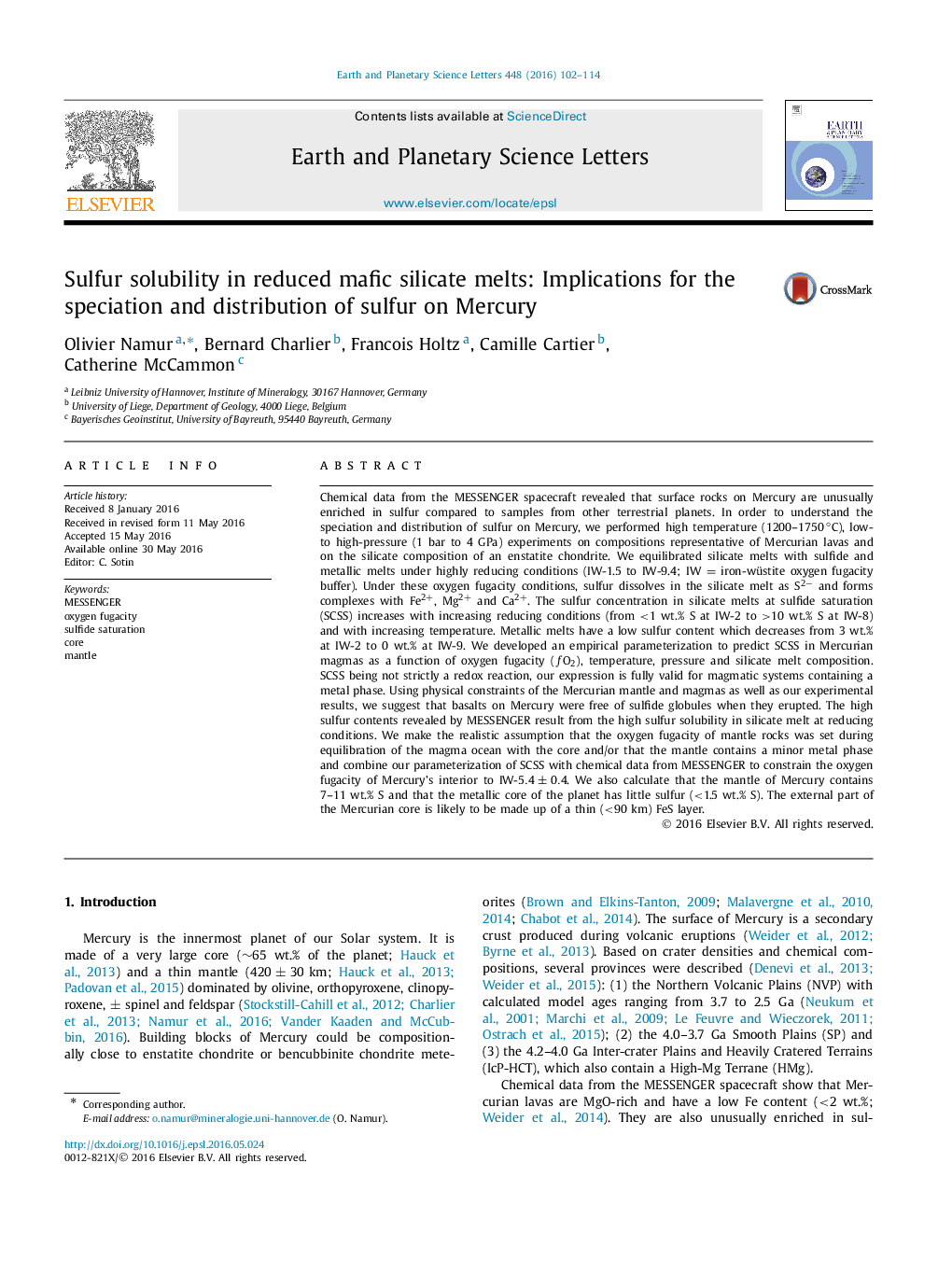| کد مقاله | کد نشریه | سال انتشار | مقاله انگلیسی | نسخه تمام متن |
|---|---|---|---|---|
| 4676921 | 1634708 | 2016 | 13 صفحه PDF | دانلود رایگان |
• We performed S solubility experiments on Mercurian lavas and enstatite chondrite.
• The solubility of sulfur (S2−S2−) increases with temperature and reducing conditions.
• Oxygen fugacity in Mercurian lavas is IW-5.4±0.45.4±0.4.
• 7–11 wt.% S in the mantle of Mercury and <1.5 wt.% S in the metallic core.
• The external core of Mercury is made up of a thin FeS layer (<90 km).
Chemical data from the MESSENGER spacecraft revealed that surface rocks on Mercury are unusually enriched in sulfur compared to samples from other terrestrial planets. In order to understand the speciation and distribution of sulfur on Mercury, we performed high temperature (1200–1750 °C), low- to high-pressure (1 bar to 4 GPa) experiments on compositions representative of Mercurian lavas and on the silicate composition of an enstatite chondrite. We equilibrated silicate melts with sulfide and metallic melts under highly reducing conditions (IW-1.5 to IW-9.4; IW = iron-wüstite oxygen fugacity buffer). Under these oxygen fugacity conditions, sulfur dissolves in the silicate melt as S2−S2− and forms complexes with Fe2+Fe2+, Mg2+Mg2+ and Ca2+Ca2+. The sulfur concentration in silicate melts at sulfide saturation (SCSS) increases with increasing reducing conditions (from <1 wt.% S at IW-2 to >10 wt.% S at IW-8) and with increasing temperature. Metallic melts have a low sulfur content which decreases from 3 wt.% at IW-2 to 0 wt.% at IW-9. We developed an empirical parameterization to predict SCSS in Mercurian magmas as a function of oxygen fugacity (fO2fO2), temperature, pressure and silicate melt composition. SCSS being not strictly a redox reaction, our expression is fully valid for magmatic systems containing a metal phase. Using physical constraints of the Mercurian mantle and magmas as well as our experimental results, we suggest that basalts on Mercury were free of sulfide globules when they erupted. The high sulfur contents revealed by MESSENGER result from the high sulfur solubility in silicate melt at reducing conditions. We make the realistic assumption that the oxygen fugacity of mantle rocks was set during equilibration of the magma ocean with the core and/or that the mantle contains a minor metal phase and combine our parameterization of SCSS with chemical data from MESSENGER to constrain the oxygen fugacity of Mercury's interior to IW-5.4±0.45.4±0.4. We also calculate that the mantle of Mercury contains 7–11 wt.% S and that the metallic core of the planet has little sulfur (<1.5 wt.% S). The external part of the Mercurian core is likely to be made up of a thin (<90 km) FeS layer.
Journal: Earth and Planetary Science Letters - Volume 448, 15 August 2016, Pages 102–114
